Brace yourself
I’ve used a brace and bit for decades to auger through heavy timbers or bore accurate holes that can’t be reached with a drill press, but for years I was rather casual about the quality of my brace and bits and sometimes my efforts were less than spectacular.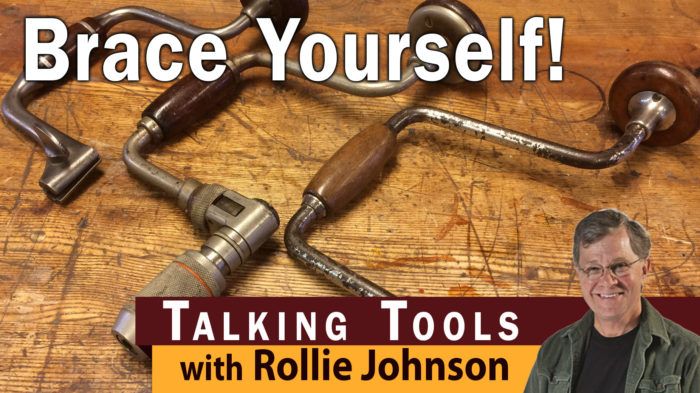
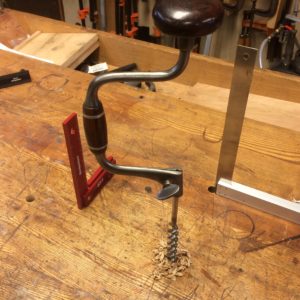 Last week I needed to bore a couple of 3/4-in. holes in the top of my workbench for a low-profile planing stop. I passed on using an electric drill and instead grabbed one of my braces and a self-feeding auger bit to do the job. I used a pair of squares to line up the bit and in less than a minute I had two clean, perpendicular holes in the top. Easy, accurate, and quiet.
Last week I needed to bore a couple of 3/4-in. holes in the top of my workbench for a low-profile planing stop. I passed on using an electric drill and instead grabbed one of my braces and a self-feeding auger bit to do the job. I used a pair of squares to line up the bit and in less than a minute I had two clean, perpendicular holes in the top. Easy, accurate, and quiet.
I’ve used a brace and bit for decades to auger through heavy timbers or bore accurate holes that can’t be reached with a drill press, but for years I was rather casual about the quality of my brace and bits and sometimes my efforts were less than spectacular.
About a decade ago, I discovered Jennings-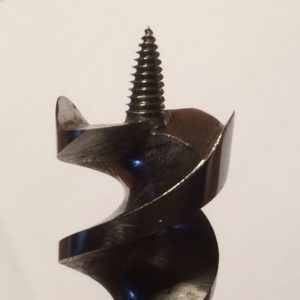 pattern self-feeding auger bits. They are incredible. The fine-thread lead screw is ideal for hardwood and the cutting spurs and lips will quickly and cleanly bore through the toughest wood. Sometime in the late 19th or early 20th century, Stanley started producing the Jennings pattern using the Jennings name concurrent with Stanley. The bits are pretty easy to find on eBay or from used-tool dealers, but you really have to pay attention to the condition of the lead screw, which can simply be worn out, and the spurs and lips, because many of them have been sharpened to death. The lips should be sharpened on the bottom side only. Often I find the tops have been filed and are not flat or parallel, so they don’t cut worth a tinker’s damn. A clue to accurately sharpened lips: As the cut starts, the shavings should start at each lip simultaneously and should be of similar thickness.
pattern self-feeding auger bits. They are incredible. The fine-thread lead screw is ideal for hardwood and the cutting spurs and lips will quickly and cleanly bore through the toughest wood. Sometime in the late 19th or early 20th century, Stanley started producing the Jennings pattern using the Jennings name concurrent with Stanley. The bits are pretty easy to find on eBay or from used-tool dealers, but you really have to pay attention to the condition of the lead screw, which can simply be worn out, and the spurs and lips, because many of them have been sharpened to death. The lips should be sharpened on the bottom side only. Often I find the tops have been filed and are not flat or parallel, so they don’t cut worth a tinker’s damn. A clue to accurately sharpened lips: As the cut starts, the shavings should start at each lip simultaneously and should be of similar thickness.
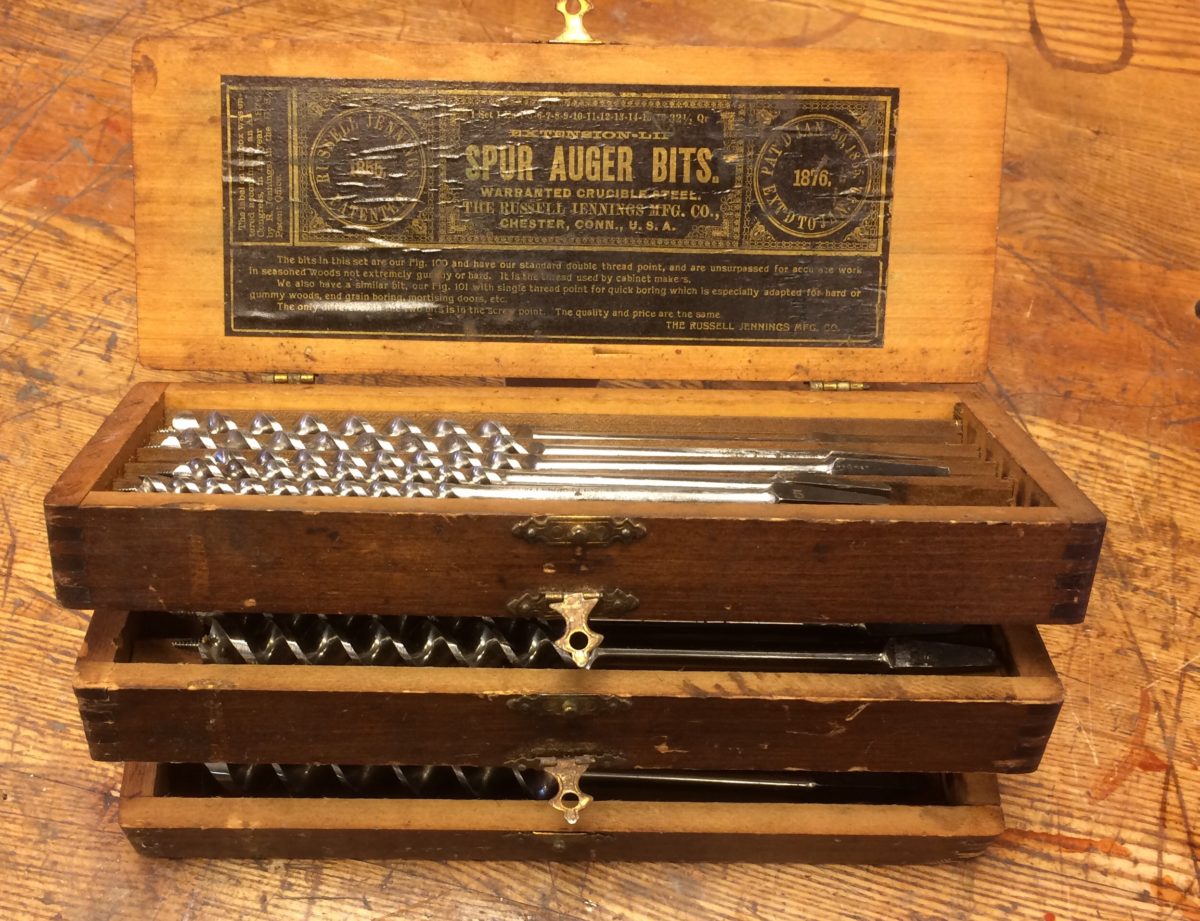
Full sets of Jennings bits can frequently be found on eBay, where if you are diligent and patient, you can find full sets of very serviceable bits for less than $100, or about $8 a bit. The bits often come in their original three-layer hinged box and the typical set consists of 13 bits, numbered 4 through 16, with the numbers correlating to 1/16 in. (a number 4 bit is 4/16 or 1/4 in.).
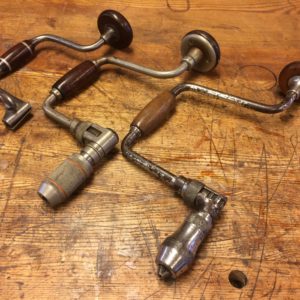 Very good braces are easy to find and are generally inexpensive. Modern braces have a handy ratcheting device built into the chuck that allows forward ratchet, reverse ratchet, and simply locked in place. The forward ratchet is ideal for boring a hole close to a partition or deep in a corner where you can’t swing the handle in a complete circle. It also works great for driving large screws where short arcs make it easier to keep the driver tip in the screw slot. Electric-powered drills simply don’t have the low speed ability of a hand-powered brace, and if you’re using a brace with a 10-in. swing—measured from the center of the handle to the center of the chuck, times 2—a lot of easily controlled torque can be
Very good braces are easy to find and are generally inexpensive. Modern braces have a handy ratcheting device built into the chuck that allows forward ratchet, reverse ratchet, and simply locked in place. The forward ratchet is ideal for boring a hole close to a partition or deep in a corner where you can’t swing the handle in a complete circle. It also works great for driving large screws where short arcs make it easier to keep the driver tip in the screw slot. Electric-powered drills simply don’t have the low speed ability of a hand-powered brace, and if you’re using a brace with a 10-in. swing—measured from the center of the handle to the center of the chuck, times 2—a lot of easily controlled torque can be
brought to bear for driving and drilling.
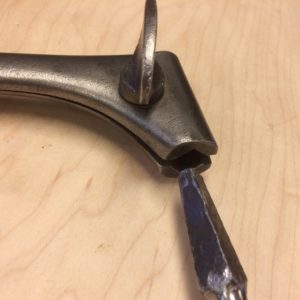 One style of brace that has become a favorite of mine is the Spofford brace, specifically John S. Fray’s beautiful rosewood handled brace with pewter banding on the grip. The Spofford patent is the quick-change bit of its era. A huge thumbscrew pinches a receiver that is internally shaped like the tapered end of the bits and allows quick removal and replacement of the bit with no loss in accuracy of the bit’s rotation. Curtis Buchanan turned me on to this brace years ago; it’s one that he uses for building his beautiful Windsor chairs. Thanks, Curtis.
One style of brace that has become a favorite of mine is the Spofford brace, specifically John S. Fray’s beautiful rosewood handled brace with pewter banding on the grip. The Spofford patent is the quick-change bit of its era. A huge thumbscrew pinches a receiver that is internally shaped like the tapered end of the bits and allows quick removal and replacement of the bit with no loss in accuracy of the bit’s rotation. Curtis Buchanan turned me on to this brace years ago; it’s one that he uses for building his beautiful Windsor chairs. Thanks, Curtis.
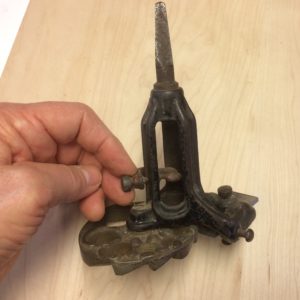
A wide variety of accessories is available for use with a bit brace. You can easily find taper cutters, round tenon cutters, spoon bits, and a host of other interesting toys … er, tools … that will make a bit brace a welcome addition to any shop.
What cool or interesting bit brace accessories do you have?
Fine Woodworking Recommended Products

Olfa Knife

Starrett 4" Double Square

Stanley Powerlock 16-ft. tape measure

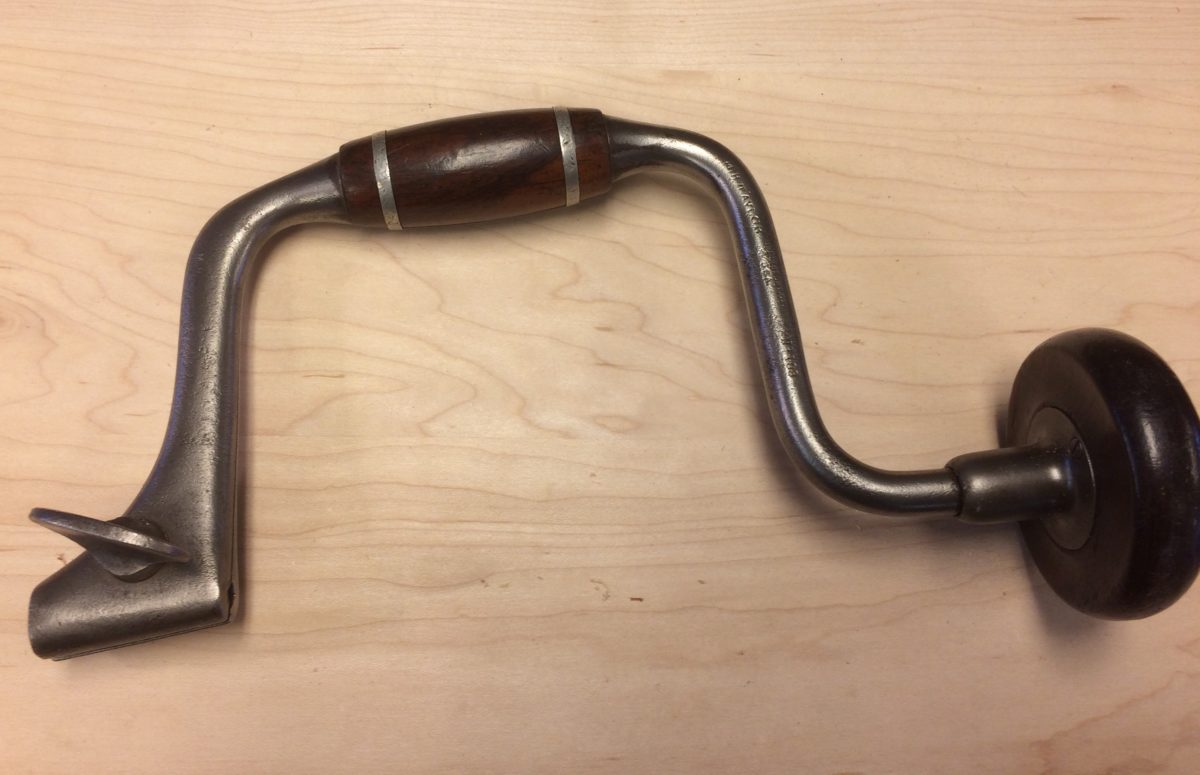
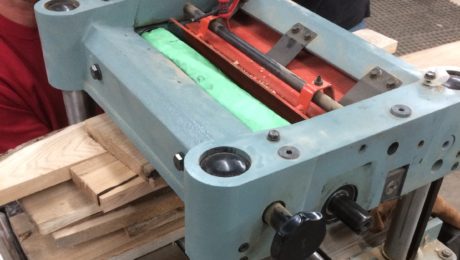
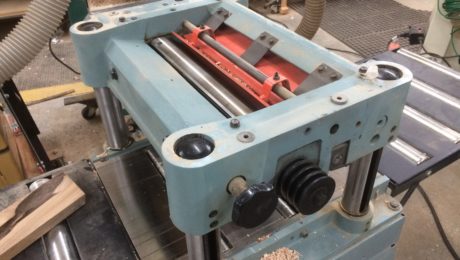
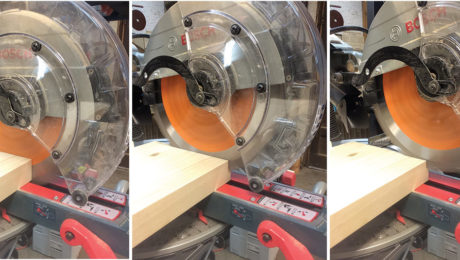
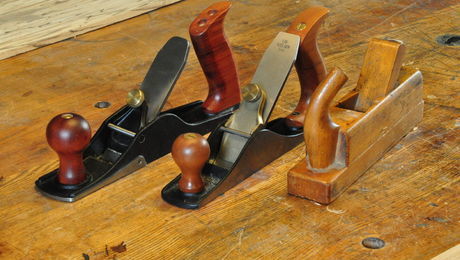






















Comments
This post reminds me of how much I relied on my brace and bits as a young carpenter in the sixties. The other choices were a 1/4" single speed electric drill or a bulky 1/2" electric drill. Not so handy for large, fine depth, flat bottom holes for hardware or in close quarters on the jobsite. Now I'll have to dig mine out and clean it up.
Growing up in the fifties I thought my father was the only one who new so much about tinker's. It's good to know this knowledge has spread from central MS. to central MN. Thanks for the memories.
One of my favorite bits is a 3/8 drive for my socket set. It's great for removing long bolts.
Idea for your next article; how to sharpen the spur auger bits.
One burning question , how do they get the handle onto the middle of the shaft, do they bend it after the handle is put on, can't find an answer anywhere, any suggestions please ?
This is the third suggestion of the Spofford I've seen in recent months. Guess I'll have to look into one.
And by the way, there's also knowledge of tinkers at least in northern Arkansas, where my dad grew up and taught me the same phrase (which I had forgotten, thanks Roland!)
I just found an interesting gear-driven brace at a pawn shop... It has two sets of gears oir different torque and a shoulder pads for leaning into it. Now I need some bits. Great article an timely for me too :) thanks
Thanks for all the replies and yes there is something very nostalgic about using a brace and bit.
I would like to see a photo of that gear-driven brace. I don't think I've ever run across one>
Could you make a jig out of two by material with a 3/4" hole in it drilled on the drill press? Use it as a guide to make a perfectly perpendicular hole.
When I was growing up, my dad was the kind of guy that could make anything. He grew up on a farm in Kansas in the early 1900's. In the 1950's, we had no power tools. We used a brace and bits and for smaller jobs we used an "eggbeater" drill. We had a crosscut saw a rip saw a hammer, chisels, plane, and screwdrivers. That's about all you needed. I still have all his tools and use them all the time. He passed away 20 years ago and almost never used a power tool.
I don't know how to post a photo here or I could show a picture of that gear driven brace. I'd never seen one like it either 😊
Log in or create an account to post a comment.
Sign up Log in